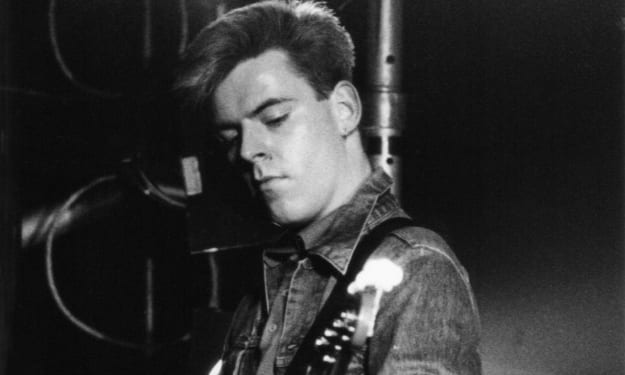
In recent years, the fashion industry has witnessed a remarkable shift as consumers and brands have embraced the concept of slow fashion. As an alternative to the fast-paced, disposable nature of fast fashion, slow fashion promotes sustainability, ethical production practices, and a more mindful approach to clothing. This trend towards conscious consumption is driven by a growing awareness of the environmental and social impacts of the fashion industry. In this article, we will explore the rise of slow fashion, its guiding principles, and the myriad benefits it offers to both individuals and the planet. From eco-friendly materials and fair labor practices to timeless designs and personalized style, slow fashion is revolutionizing the way we think about clothing.
The Environmental Impact of Fast Fashion
The fast design industry has for quite some time been related with adverse natural impacts. Quick creation cycles, unnecessary waste, and the utilization of poisonous synthetics add to contamination, deforestation, and asset exhaustion. Be that as it may, as buyers become more educated, they are requesting maintainable other options. Slow design tends to these worries by advancing practical materials, decreasing waste, and focusing on solidness. Eco-accommodating textures like natural cotton, hemp, and reused filaments are acquiring prevalence, offering purchasers earth cognizant choices. Furthermore, slow style energizes a shift towards capable assembling processes, like utilizing normal colors and limiting water use, to relieve natural damage.
Ethical Considerations: Fair Labor and Supply Chain Transparency
One more basic part of slow style is its obligation to moral creation rehearses. Quick style brands have frequently confronted analysis for taking advantage of laborers through low wages, perilous working circumstances, and youngster work. Conversely, slow style underscores fair work works on, guaranteeing that article of clothing laborers get fair wages and work in safe conditions. Many sluggish style brands focus on straightforwardness, giving point by point data about their stock chains to guarantee purchasers of their moral responsibilities. By supporting sluggish style, customers can add to making a more impartial design industry that esteems the prosperity and nobility, everything being equal.
Quality over Quantity: Embracing Timeless Designs
Slow style supports a shift away from the way of life of quick utilization and expendable dress. Rather than pursuing patterns that rapidly blur, slow style advances immortal plans and top notch articles of clothing that are made to endure. By putting resources into tough pieces, buyers decrease squander as well as set aside cash over the long haul. Slow design urges people to foster their own style and fabricate a closet of flexible pieces that can be blended and matched into the indefinite future. This approach supports a more profound appreciation for craftsmanship and configuration, encouraging a more practical and satisfying relationship with dress.
The Rise of Secondhand and Upcycled Fashion
Thrifting and upcycling have become well known patterns inside the sluggish design development. Handed down shopping offers a maintainable option in contrast to buying new things, diminishing the interest for asset serious creation processes. Numerous buyers are tracking down happiness in finding one of a kind classic pieces and reviving pre-cherished dress through upcycling and DIY (Do-It-Yourself) projects. Online stages and devoted secondhand shops are making it simpler than any time in recent memory to get to an extensive variety of handed down style. By embracing secondhand and upcycled style, people can communicate their innovativeness, lessen their carbon impression, and backing a round economy.
Mindful Consumption: Benefits for Individuals and the Planet
Embracing slow design goes past natural and moral contemplations; it likewise brings individual advantages. By embracing a more careful way to deal with dress, people can develop a more profound association with their closet and lessen the inclination for imprudent buys. Slow design energizes cognizant direction, permitting people to focus on quality, individual style, and the narratives behind their pieces of clothing. By putting resources into immortal, very much created pieces, buyers can fabricate a closet that mirrors their qualities and independence. Slow style urges customers to ponder their utilization propensities, advancing a feeling of fulfillment and satisfaction with less, well-organized things.
Moreover, embracing slow design emphatically affects mental prosperity. By moving away from the consistent strain to stay aware of quick style, people can reduce the pressure and tension related with continuously wanting to purchase the most recent styles. Slow style empowers a more contemplative and deliberate way to deal with dress, permitting people to zero in on private articulation as opposed to adjusting to brief patterns.
According to a cultural point of view, the ascent of slow design can possibly reshape the whole style industry. As buyer interest for feasible and moral attire develops, more brands are constrained to integrate these standards into their practices. Huge style retailers are beginning to investigate reasonable assortments, while free creators and limited scope brands are arising with a devoted spotlight on sluggish design values. This change in the business helps the climate and laborers as well as advances a more different and comprehensive style scene that praises craftsmanship and singularity.
Besides, slow style cultivates a feeling of local area and association. Nearby business sectors, trade gatherings, and dress trades have acquired fame as stages for trading and sharing attire, advancing manageability and social cooperation. Slow design occasions, studios, and instructive missions give open doors to people to find out about the significance of moral and feasible style rehearses, further reinforcing the development.
Nonetheless, it is fundamental to recognize the difficulties that sluggish style faces. The insight that supportable and moral apparel is costly and difficult to reach actually endures, hindering a few customers from completely embracing the development. Moreover, the charm of quick style's reasonableness and consistent oddity represents a steady enticement for those looking for moment delight. To address these difficulties, training and mindfulness crusades are pivotal in featuring the drawn out worth and positive effect of slow design.
Conclusion
All in all, the ascent of slow style denotes a huge change in outlook in the design business. By embracing reasonable materials, fair work rehearses, immortal plans, and careful utilisation, people can effectively add to an additional supportable and moral future. Slow style energizes a comprehensive methodology that helps the climate, laborers, and individual prosperity. As this development picks up speed, it is basic for buyers, brands, and policymakers to team up to make a style industry that lines up with the standards of maintainability, morals, and individual articulation. By embracing slow design, we can shape a future where dress isn't simply an impression of style yet additionally a power for positive change.
About the Creator
Muntasir
With a knack for storytelling and an insatiable curiosity, I bring these subjects to life through engaging and informative writing.






Comments
There are no comments for this story
Be the first to respond and start the conversation.